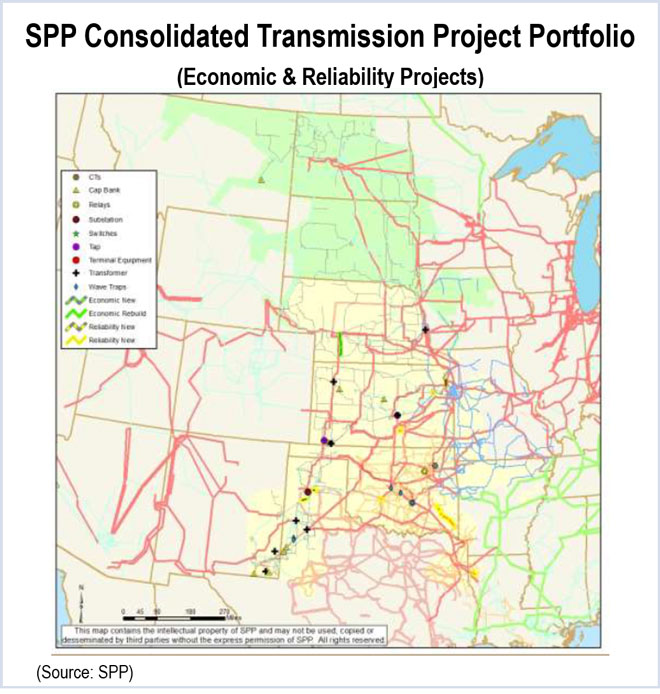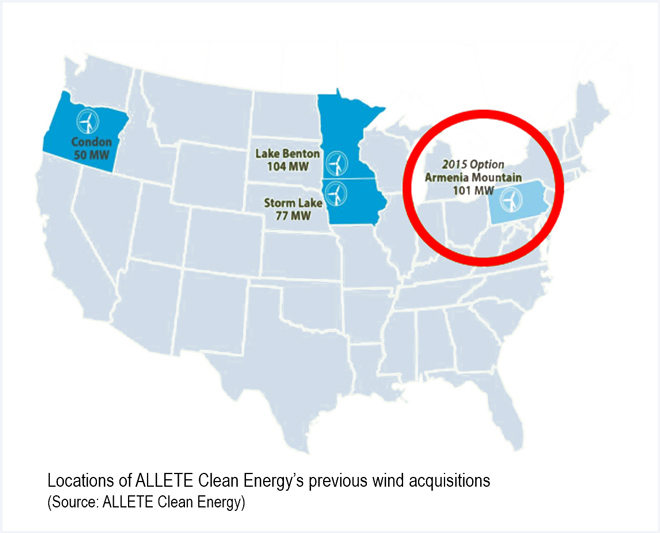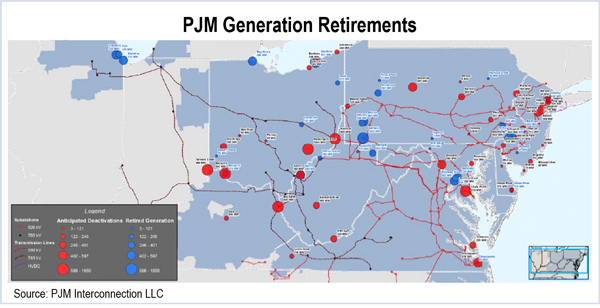Refinery Files for Permit to Build $100 million Hydrogen Plant

PBF applied to the Department of Natural Resources and Environmental Control for water intake and discharge permits for the project. Any construction along the state’s coastline needs Coastal Zone Act approvals.
PBF said in the application that the new plant would allow removal of more than 20,000 tons of sulfur from products made at the refinery. PBF in October announced it was cancelling plans to build a different, $1 billion plant on the site.
More: The News Journal
ILLINOIS
Natural Gas Rate Hikes Waiting for Two New ICC Members
Rate-increase proposals from two Integrys gas utilities are on hold until Gov. Bruce Rauner names two new members to the Commerce Commission to replace Chairman Doug Scott and Commissioner John Colgan, whose terms ended yesterday.
North Shore Gas and Peoples Gas have applied for increases to their base rates. Bills for Peoples customers would increase by about $5 a month and North Shore bills by about $2.50 a month.
Both companies are also seeking substantial boosts to their monthly fixed-rate customer charges. Peoples has requested a 43% increase in its $27 monthly fee to $38.50. Its fee is already the second-highest of any utility in the Midwest. North Shore is seeking a 24% increase of its monthly service charge to $29.55. Consumer groups and the state attorney general’s office have already voiced opposition.
More: The Chicago Tribune (subscription required)
MARYLAND
General Assembly Starts with New Legislation for Renewable Energy

Sen. Brian J. Feldman of Montgomery County sponsored a bill that would require 40% of the state’s electricity come from renewable sources by 2025. The state’s utilities got 10% of their electricity from renewable sources last year.
The bill’s passage is a long shot though. Larry Hogan, who gets sworn in on Wednesday as governor, says ratepayers should not be asked to pay a premium for renewable power. The chairman of the House Economic Matters Committee, which handles such legislation, said he doesn’t see it passing this year.
More: The Baltimore Sun
MICHIGAN
PSC Approves Increase for Consumers Energy Gas Rate
The Public Service Commission narrowly approved a 2.4% gas-rate increase for Consumers Energy. The monthly bill for a typical residential customer will go up by about $1.97.
Consumers Energy asked for an $88 million rate increase. The PSC approved $45 million. The company said it needed the increase to offset increased operating and maintenance expenses. It was its first contested rate increase since 2010.
More: MLive
MINNESOTA
Opposition Growing to Xcel’s Plan for 62-MW Solar Project
Local residents want more say over a NextEra Energy Resources plan to build a 62-MW solar project on 500 acres of farmland in southwestern Minnesota.
Under state law, approval of solar projects of more than 50 MW shifts from local control to state regulators. Local opponents of the $100 million NextEra project, which would sell its output to Xcel Energy’s distribution system, say their rights are being ignored in the state’s quest to produce more renewable energy. The state has set a goal of developing 1.5% of its electricity by solar by 2020.
“If loss of local control, decreased property values, increased cost of electricity or future cleanup issues of a 500-acre industrial site is a concern, then this project is a concern,” farmer Greg Boerboom wrote in a letter to The Marshall Independent. “This project, mandated by the metro members of our Minnesota Legislature along with our governor, ignored the facts about the inefficacy of solar power.”
More: Watchdog
Rail Authority Gives Backing to Sandpiper Pipeline Plan
The Anoka County Regional Rail Authority has voiced its support for a proposed oil pipeline that would run from North Dakota through Minnesota to Wisconsin, relieving some of the traffic from congested rail lines in the northern Great Plains.
The seven-member authority voted to endorse the Sandpiper Pipeline in part because it will help relieve rail congestion on the Burlington-Northern Santa Fe (BNSF) route through Minnesota. Commissioner Jim Kordiak said he was “very supportive” of the plan because he sees the pipeline as a much safer way to transport crude oil from North Dakota’s Bakken field.
More: ABC Newspapers
MISSOURI
Two Bills Aimed at Supporting Solar Introduced to General Assembly
The state’s solar industry, experiencing a rapid slowdown tied to the end of utility rebates, could get a boost if two measures introduced in the General Assembly are approved.
The first proposal would raise the limit on solar installations that qualify for net metering, from the current 100 kW to 1 MW. A second proposal eliminates the size cap and would allow for a yearly “true-up” of net generation, which would let solar owners bank generation credits for a year, rather than the current month. Excess generation is currently tabulated monthly at a reduced-fuel cost, about 2 cents/kWh.
“I’m trying to find some place that is workable for a new industry and workable for how the current power producers work,” said Rep. T.J. Berry, sponsor of one of the bills.
More: Midwest Energy News
Ameren Missouri Raises Energy Efficiency Fee
The Public Service Commission approved an increase of Ameren Missouri’s energy efficiency fee from $3.70 a month for a typical customer to $6 a month starting Jan. 27. The fee finances the company’s demand-side management programs and other efficiency efforts.
More: The Missouri Times
NEBRASKA
Anne Boyle Retires from PSC After 20 Years
Anne Boyle, whose family’s political roots go back to her great-grandfather’s service in the Legislature, retired from the Public Service Commission after 20 years.
Boyle, a Democrat, often found herself fighting for the rights of “the little guy,” according to fellow PSC Commissioner Frank Landis, a Republican. “Anne truly believed in doing the most that she could to better the quality of life for the underprivileged,” Landis said. “She believed it. She acted on it. And she lived it.”
More: Omaha World-Herald
NEW MEXICO
159-Mile Transmission Line Proposed for NM-Texas
Xcel Energy is reaching out to landowners in preparation for building a 159-mile, 345-kV transmission line that would run from Texas to New Mexico.
The Tuco-Yoakum-Hobbs project is in its early stages, according to the company. If it gains regulatory approval from the Federal Energy Regulatory Commission and state agencies, it could go into service in 2020. The company said the $237 million project is necessary to deliver power to the growing natural gas and oil industry in West Texas and in New Mexico.
The transmission line is one of more than 44 possible projects proposed by Southwest Public Service Co., Xcel’s subsidiary in New Mexico. The company submitted plans for those projects, which would cost an estimated $557 million, to SPP in 2014.
More: Brownfield News
NORTH CAROLINA
Duke’s Rate of Return Higher than Allowed
The Utilities Commission says that Duke Energy’s two utilities are generating higher rates of return than allowed, but that the rates are dropping to the allowed levels.
Both Duke Energy Carolinas and Duke Energy Progress experienced dramatic increases in rates of return after a 2013 rate case. Duke Carolinas’ overall return peaked at 8.36% in June, nearly half a percentage point above the allowed 7.88%. Duke Progress’ overall return was 8.06%, above the 7.55% allowed.
The agency’s staff said cold weather at the start of 2014 may have been a factor for the increases but that the commission could take action if the figures don’t stay in line with the allowed margin.
More: Charlotte Business Journal
NORTH DAKOTA
Bill Could Undo Regulations to Reduce Natural Gas Flaring and Oil Conditioning
Legislators are seeking to roll back state regulations that call for a decrease in gas flaring at oil wells and a reduction in the volatility of crude oil that will be transported by rail and road.
The rule on gas flaring calls for oil producers to capture 77% of wellhead natural gas this year, 85% by 2016 and 90% by 2020. Some oil producers, who burn off associated natural gas from oil wells where they have not yet built pipelines to capture the gas, have cut back production in order to reach the 2015 goals. The rule ordering oil transporters to condition crude to make it safer for transport is set to go into effect April 1.
The new rules, approved by the Industrial Commission, did not go through the Legislative Assembly’s Administrative Rules Committee. Putting both regulations through legislative review could take an additional nine to 10 months.
More: Jamestown Sun
OHIO
PUCO Holds Hearing on FirstEnergy’s Guaranteed Return Plan for Plants
About 100 people attended the first of three public hearings on FirstEnergy’s “electric security” plan that would allow its largest generating plants to receive a guaranteed price from customers.
Opinion was split at the Public Utilities Commission hearing. FirstEnergy said the plan would keep the plants open in the face of increased competition from natural gas-fired plants and wind farms, and save consumers billions of dollars. Several elected officials and business owners came to express their support for the plan.
But some consumer advocates complained that ratepayers were being asked to subsidize the energy company to the tune of billions. “FirstEnergy doesn’t play by the rules,” said Dex Sims, a member of the Communities United for Responsible Energy. An evidentiary hearing is set for Jan. 28.
More: Akron Beacon Journal
PENNSYLVANIA
PUC Chief Says Philly’s Gas Lines Pose Risk to City Residents
The chairman of the Public Utility Commission said almost half of Philadelphia Gas Works’ natural gas lines are “at risk” and announced a comprehensive program to review the city-owned utility’s pipeline safety and replacement program.
Chairman Robert Powelson said the city’s residents are “threatened by at-risk pipelines and an alarmingly slow replacement schedule.” He said the company’s current plans to replace its riskiest gas mains in 88 years is insufficient.
PGW maintains the largest municipal-owned system in the U.S., with about 1,500 miles of cast iron pipes, some dating to the 1800s. The PUC said it costs about $1.4 million to replace each mile in Philadelphia.
More: Pittsburgh Tribune-Review
SOUTH DAKOTA
Another Pipeline Planned to Run Through State
Public officials received a briefing last week on a proposed 1,134-mile crude-oil pipeline to run from North Dakota, through South Dakota and eventually terminate in Illinois.
The Dakota Access Pipeline, with an estimated price of $3.78 billion, is designed to carry Bakken crude from the North Dakota oil fields to other pipelines in Illinois, and then to refineries.
The South Dakota Public Utilities Commission is holding a public hearing Thursday in Sioux Falls on the project. Depending on regulatory approval, construction is to begin early 2016 and be completed the following year. It is designed to carry up to 570,000 barrels of crude oil a day.
More: Argus Leader
TENNESSEE
Regulatory Authority Approves Plains & Eastern Clean Line

The authority granted a Certificate of Public Convenience and Necessity, the final approval needed. The project already had received necessary approvals from the Federal Energy Regulatory Commission and the U.S. Department of Energy. Construction is set to begin soon, with the line going into operation by 2019.
More: Memphis Business Journal
VIRGINIA
More Opposition to Proposed Tx Lines for Prince William County Data Center
More than 800 residents packed a high school auditorium to protest the proposed construction of a transmission line to serve a data center in a semi-rural district near D.C.
Opposition formed quickly to the Dominion Virginia Power proposal, for which the company has not yet applied for permits with the State Corporation Commission.
Although Dominion has not identified the high-load customer for the transmission line, some elected officials have said the data center is to be built for Amazon.com. Dominion has prepared two separate route plans for the line — one above-ground, and one with portions to be underground. The part-underground route, which would run along Interstate 66, is estimated to cost about $140 million, nearly $80 million more than the aerial line.
More: Washington Post
WEST VIRGINIA
Appalachian Power Plans to Upgrade 21-Mile Transmission Line
Appalachian Power announced last week it plans to upgrade a 69-kV transmission line that dates back to 1917.
The line, which runs 21 miles from Bland and Wythe counties in Virginia to Mercer County, W. Va., would be upgraded to 138 kV. The company said it needs the line to serve bigger load from an increased population.
The project could be completed by 2018 at an estimated cost of $70 million to $90 million.
More: WSLS
MANITOBA
Manitoba Hydro Seeks 3.95% Rate Hike, Another 3.5% Later

President and CEO Scott Thompson said the company needed the additional revenue to pay for upgrades to reduce outages. “No one wants to see energy prices rise, but it does cost money to replace these assets,” he said. “It’s really just replacing aging infrastructure that’s the key driver right now.”
The head of a coalition that has been critical of Manitoba Hydro’s expansion plans said the company’s rate increases may not be sufficient. “The path that they’re on, they’re fooling themselves if they think they can get by with that rate of increase,” said Garland Laliberte, president of the Bipole III Coalition, named for the controversial transmission project the coalition opposes.
More: Winnipeg Sun








